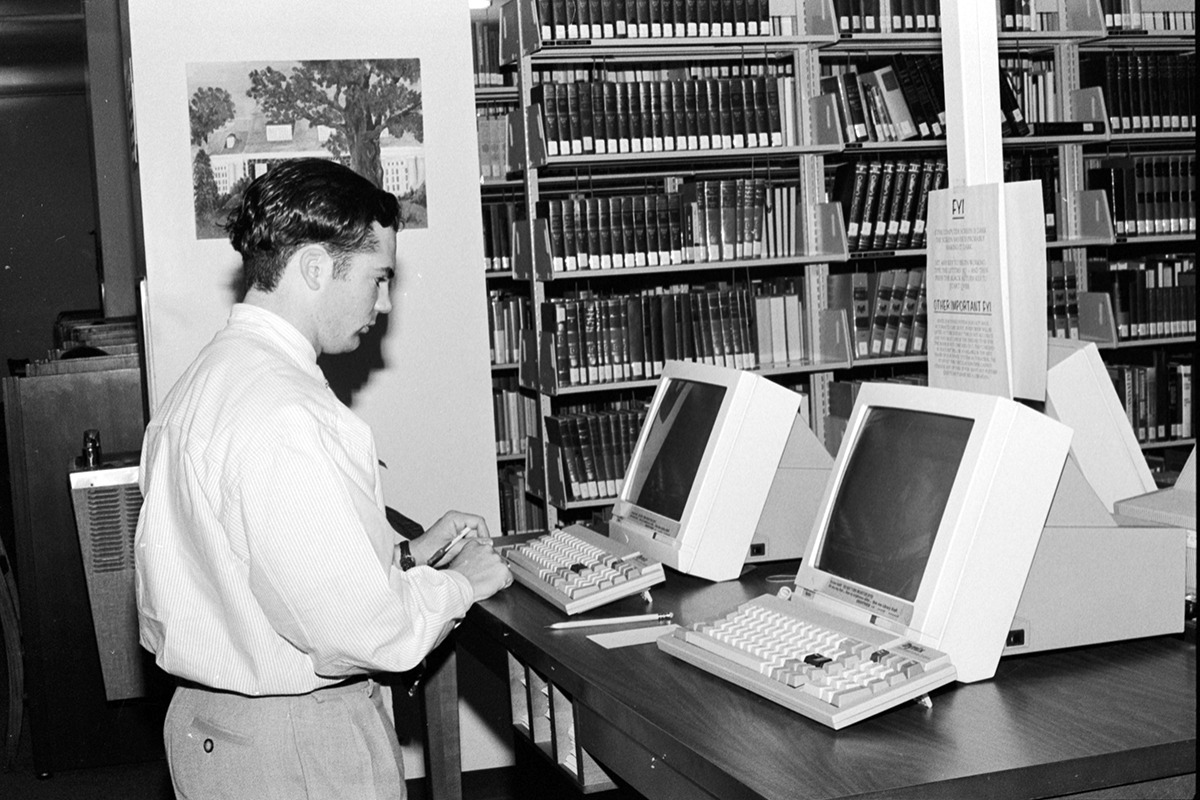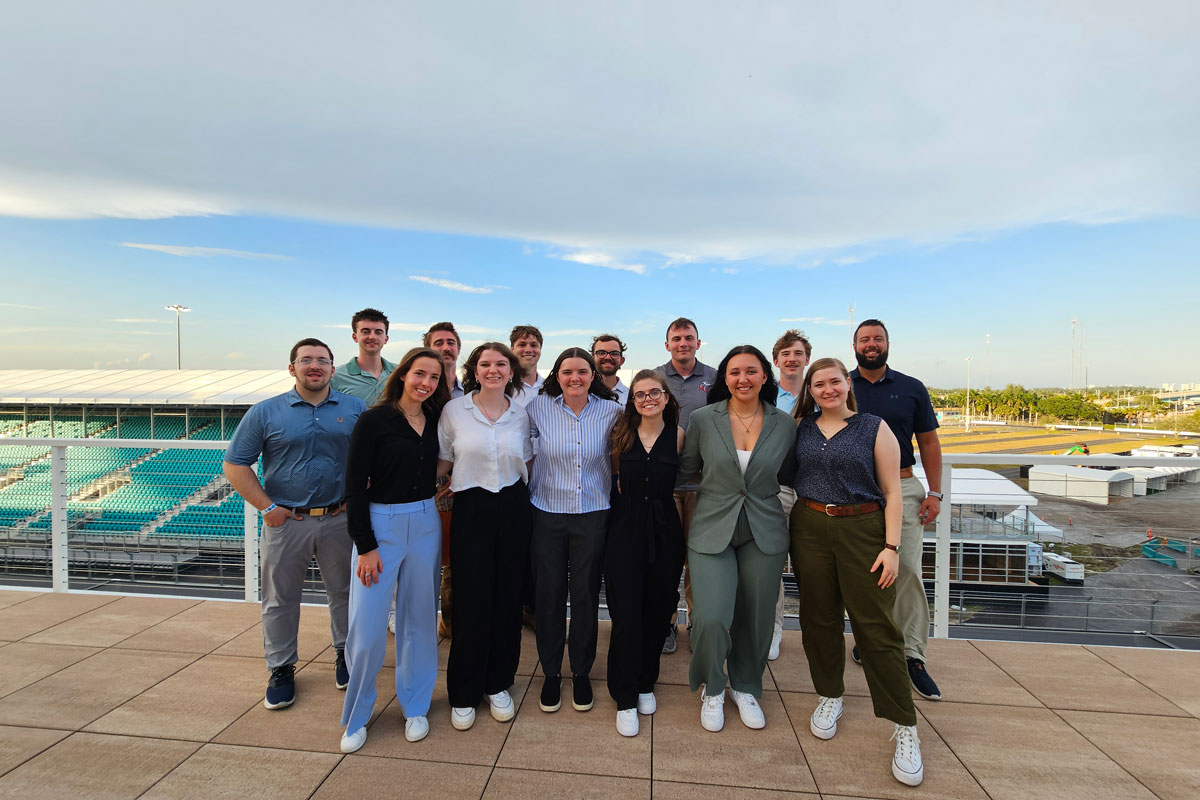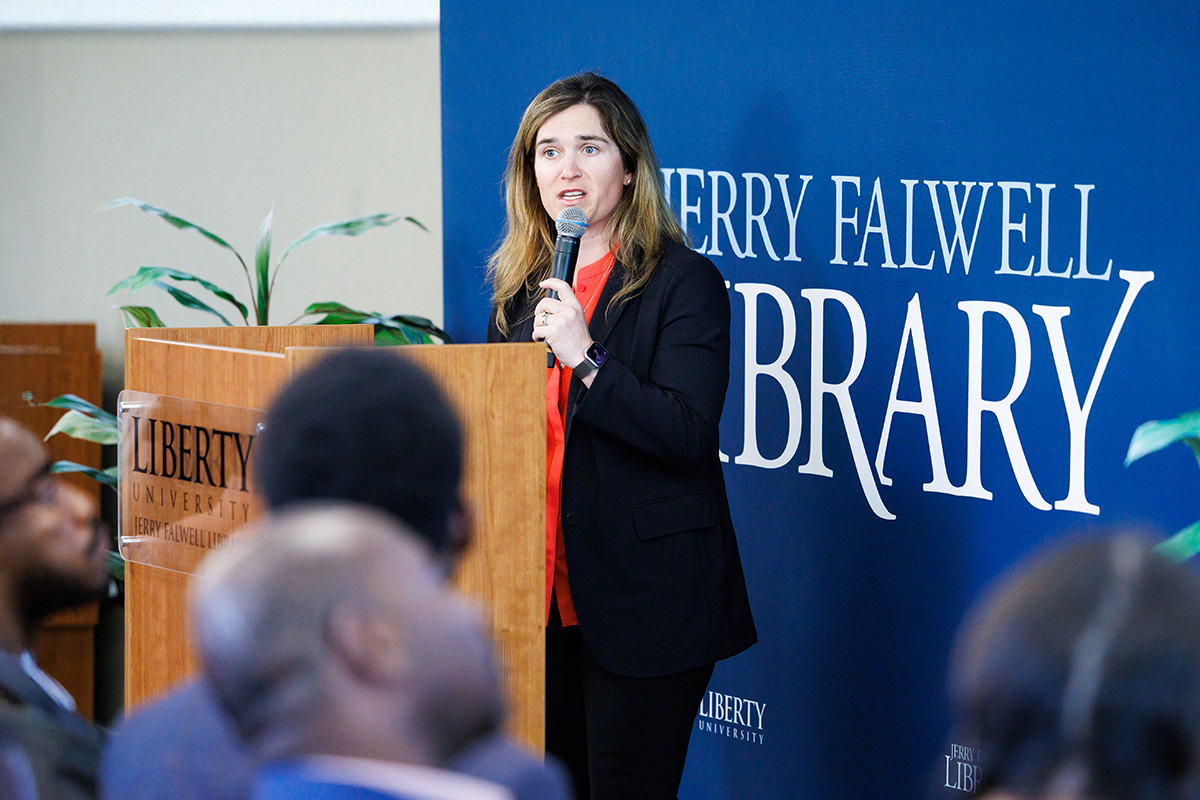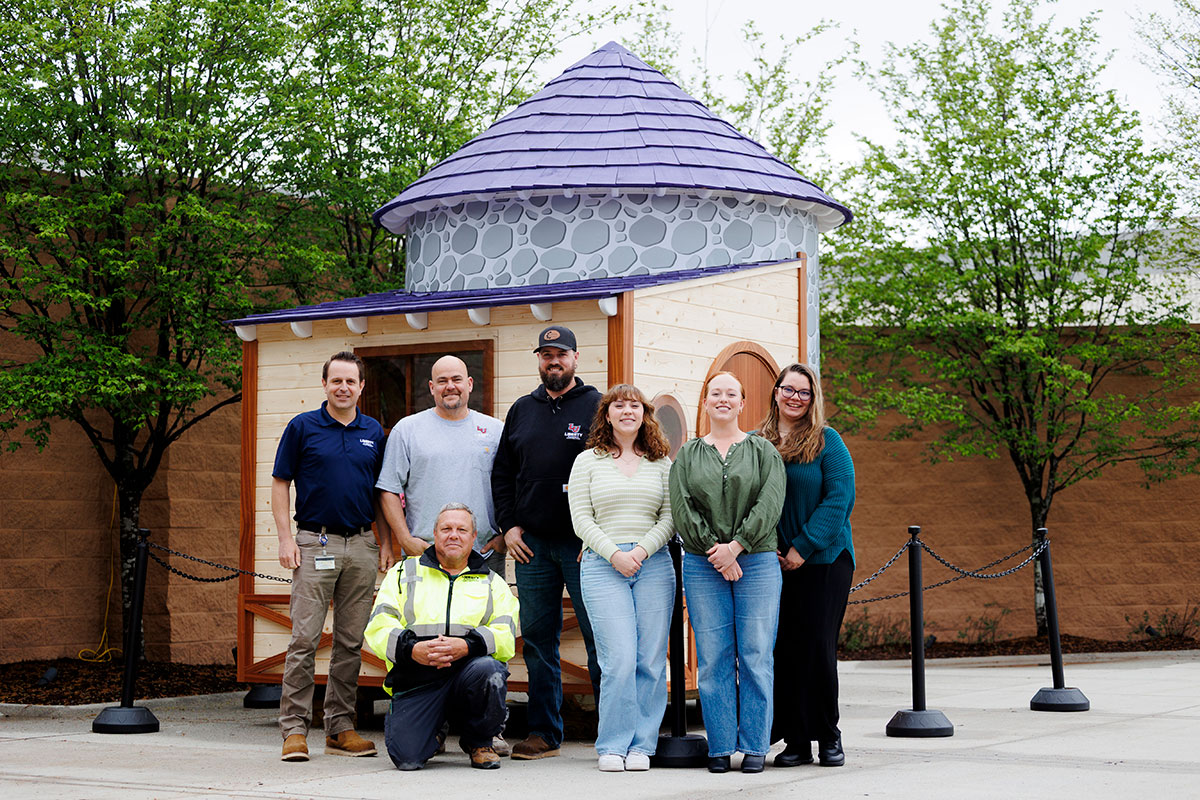Search News Archives
Filter News Articles
Additional Navigation
Jerry Falwell Library celebrates 10 years of innovation, vast resources, and unique study and social spaces
January 16, 2024 : By Ryan Klinker - Office of Communications & Public Engagement
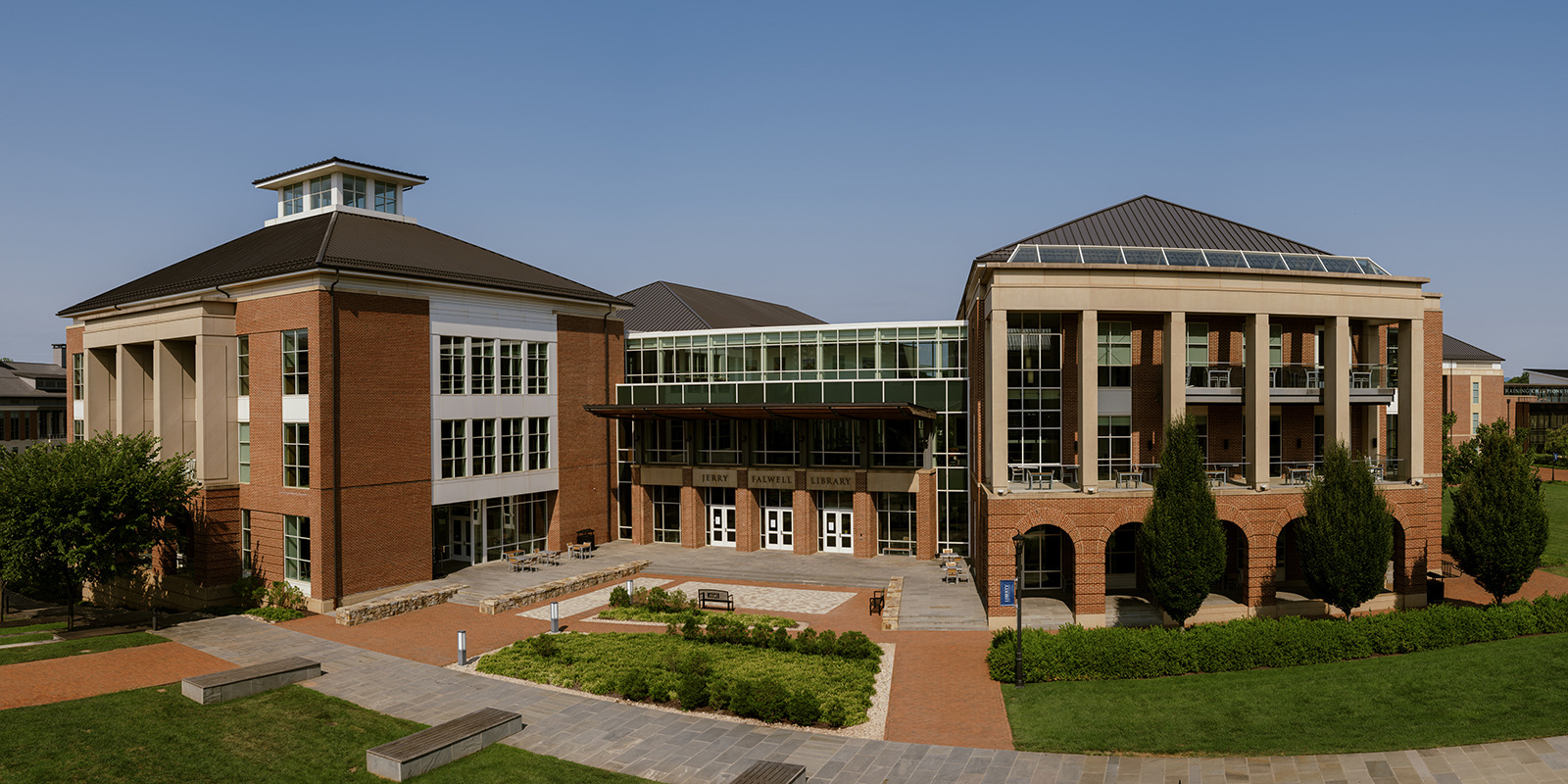
As the spring semester at Liberty University kicked off on Monday, the Jerry Falwell Library greeted students with the coinciding milestone of its 10th anniversary, marking a decade of operating an innovative and student-focused university library that has become a lively spot for students to grow and learn on Liberty Mountain.
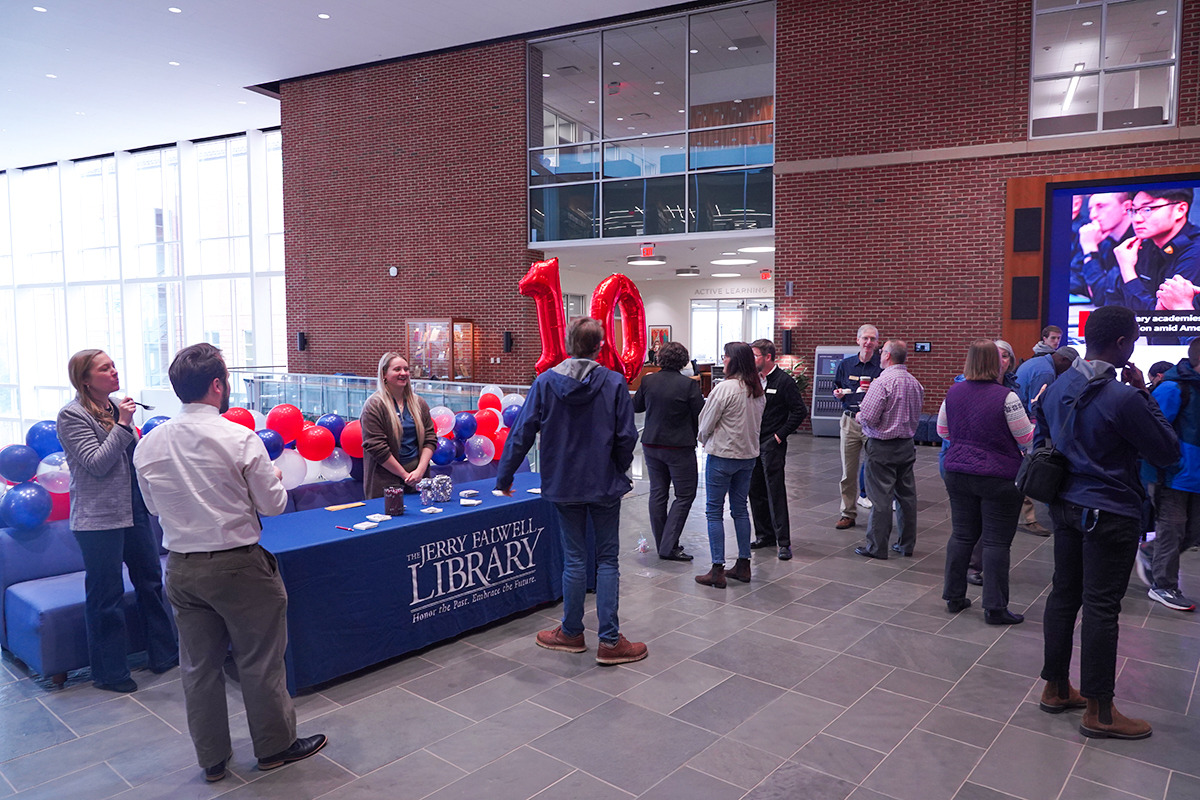
The Jerry Falwell Library officially opened on Jan. 15, 2014, becoming the first major facility to bear the name of Liberty’s founder, the late Jerry Falwell Sr. The 170,000-square-foot building is a testament to his ability to dream big and pursue those dreams with unparalleled faith and tenacity. Through this spectacular building, the library supports the university’s mission to Train Champions for Christ with a world-class Christian education.
When it opened, the library was the university’s largest investment in any on-campus structure at the time — $50 million — and was supported by Liberty’s many generous donors through a successful capital campaign. The facility helped usher in a new era for the university’s campus, bringing innovation, technological advancements, and fun, collaborative study spaces into one state-of-the-art building. The library received national recognition, including in “American Libraries Magazine’s” 2015 Library Design Showcase, where it was praised for its innovative architecture and flexible work, study, and socialization spaces, and by “Library Journal” in 2016 in which it was included as an honorable mention of Landmark Libraries “destined to be classics.”
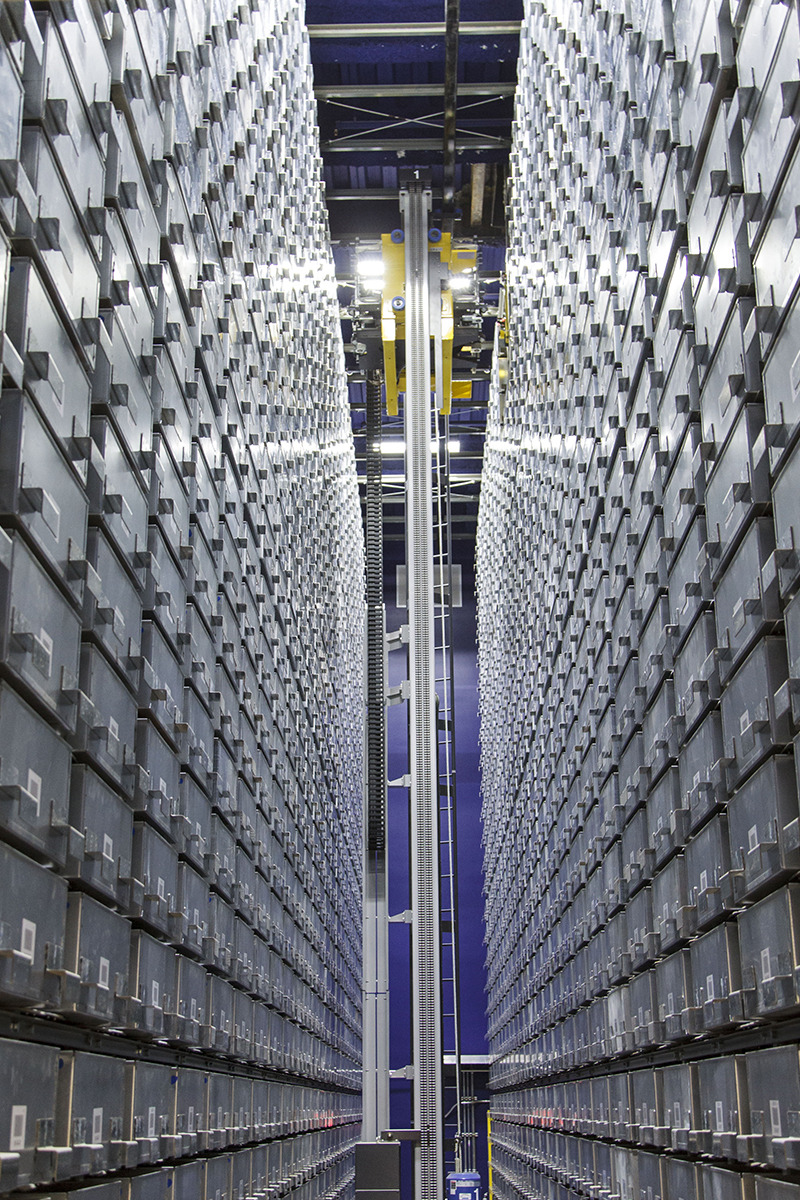
One of the standout technological features within the library is the Automated Storage and Retrieval System (ASRS), a temperature and humidity-controlled robotic system that stores the majority of the library’s physical resources and can retrieve and deliver requested items to the Customer Service Center in as little as 10 minutes.
Throughout the building, students have access to over 100 computers, wireless internet, print/scan/copy stations, a book scanner, and battery kiosks as well as rooms with telepresence technologies designed to facilitate interactive virtual learning.
There are also separate study “zones” for collaborative, quiet, and deep quiet work, complemented by 34 group study rooms with writable walls and display equipment and over 200 lockers for students to store and charge their devices. Beyond the work and study spaces, students also gather in the multi-level Tinney Café, a food court with an Argo Tea, Pizza Hut Express, Auntie Anne’s, and Einstein Bros. Bagels. The terrace level occasionally features live instrumental music performed by students and faculty in the School of Music and hosts campus events, including the annual Research Week.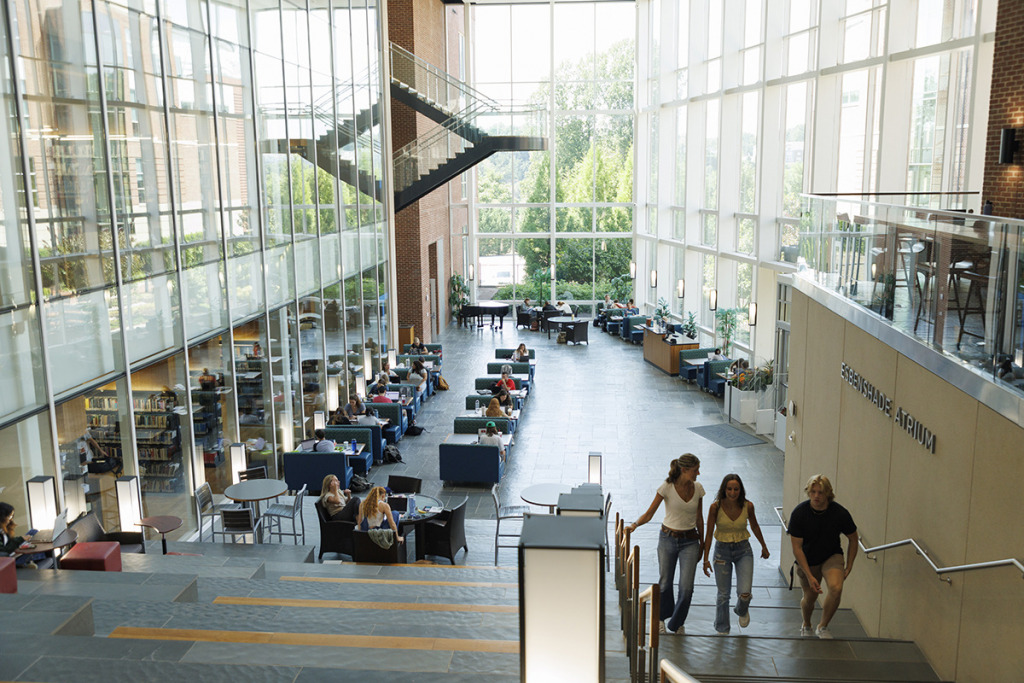
The over 427,000 physical items available on the shelves of the four-story Book Tower, the two-story Caudell Reading Room, and the Curriculum Library as well as through the ASRS are only a fraction of the library’s collection of over 3.1 million educational and research resources available through the library’s website, where customers can use a Google-like single-search to find books, journals, articles, videos, audiobooks, and more. Since it opened, the library’s collection of 316,000 electronic resources has surged to over 2.6 million. The institutional repository of scholarly works, called Scholars Crossing, holds over 17,000 items and has seen close to 12.5 million downloads of student and faculty works in the last 10 years, with 2.7 million in the past year.
Additionally, the library offers a robust Interlibrary Loan (ILL) program, enabling students and faculty to request items that the library does not own. Requested items are acquired from other participating libraries or purchased for the collection through a purchase-on-demand program. The ILL program also offers online students the ability to request physical items from the library’s collections which can be scanned or physically mailed to them through expedited shipping, depending on the amount needed and the nature of the item. The fact that the library’s website is one of the most accessed sites across the university is a testament to the valuable resources and services that it offers
The library is a popular destination on campus with approximately 600,000 visits each year and with a seating capacity for over 2,400. Angela Rice, who has served as dean of the library since October 2014, said that the library has been blessed to have library faculty and staff who are not only talented but are also dedicated to the university’s mission of helping people.
“We have phenomenal resources — great electronic resources, print resources, unusual resources like the Beyond Books collection of practical and recreation items that students have lovingly dubbed ‘The Collection of Items We’re Too Broke to Own,’ but our greatest assets are our people,” she said. “We have such great staff — many of whom have been Liberty students themselves — who are passionate about helping others. There is so much behind-the-scenes work that makes this place go; we truly have an army of terrific people who are critical to our operation. Every librarian is committed to serving Jesus Christ as well as contributing to the mission of Liberty University.”

A key role of the library is to assist students in research, which they facilitate through in-person as well as email, chat, phone, and virtual research support. There are also research guides, hundreds of online tutorials, course-specific instructional sessions, and live-streamed research webinars.
With more than 80,000 square feet of interior and exterior glass, the building allows for an abundance of natural light as well as breathtaking views of the library’s surroundings: the Reber-Thomas Dining Center and Liberty Lake to the south, the Blue Ridge Mountains in the west, and Liberty’s other gorgeous, Jeffersonian-inspired campus architecture to the north and east. As Dean Rice described it, the library is a key destination on campus.
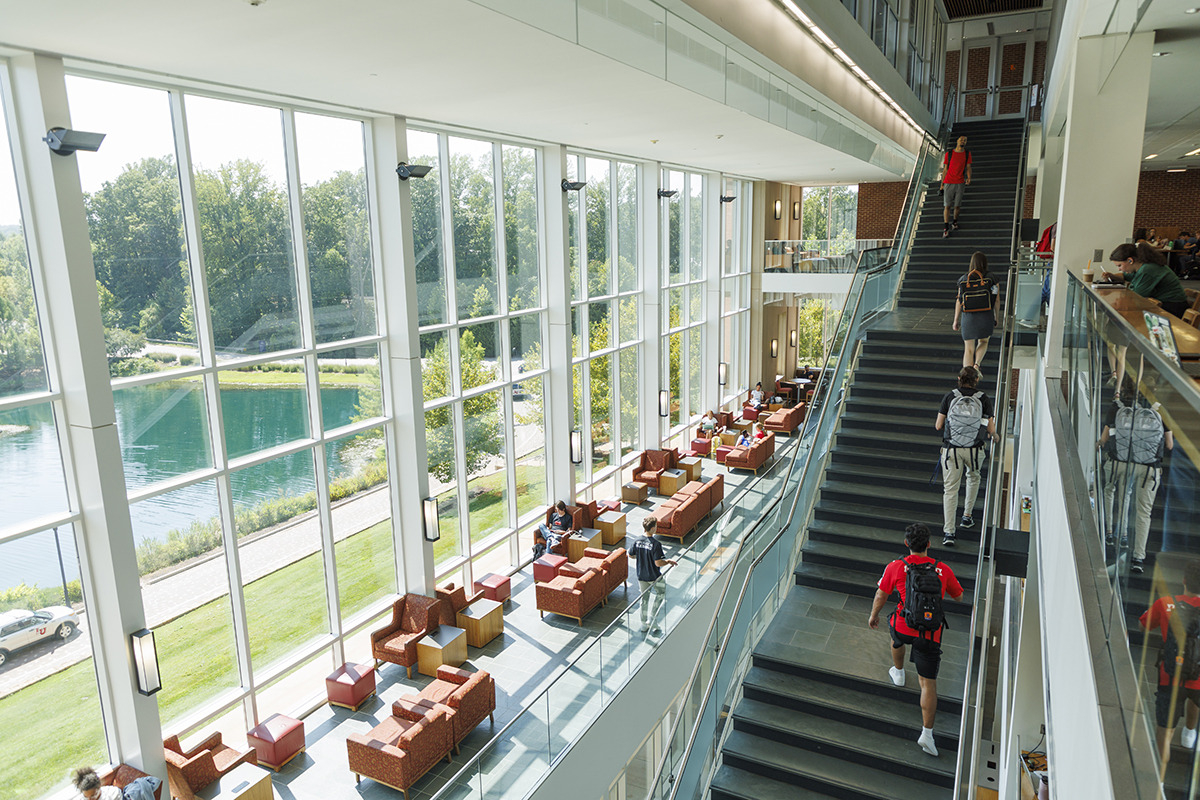
“When the Hancock Welcome Center gives tours, they have shared that we are one of the highlights of campus visits,” she said. “The library really has a ‘wow’ factor, and the students have all sorts of sightlines throughout the building.”
When the building was being constructed, the planning process included incorporating student feedback from student focus groups.
“The students wanted lots of natural light, study rooms, spaces to sit together, and more,” Rice said. “In the years since, we’ve added things like extra outlets, water bottle filling stations, whiteboards, bike and skateboard racks, exercise study bikes, and a lactation pod. We respond to student suggestions, but we also try to anticipate what they want and need.”
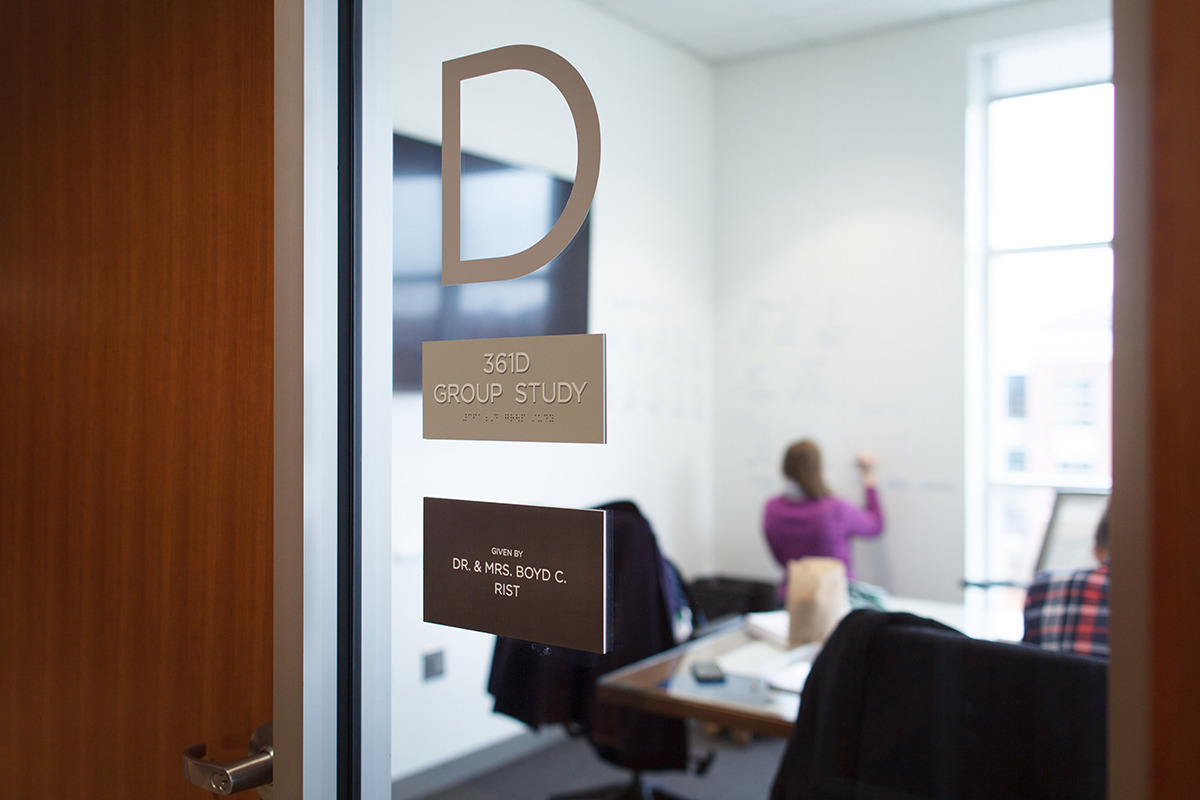
“We are all about the students,” she added. “I want students to feel comfortable coming into the library and feel like they belong here, and that applies to the online students as well. We do that through relationships, communication, and a welcoming presence.”
To learn more about the history of Liberty University and related entities, all it takes is a walk down to the terrace level, where students can find the Jerry Falwell Library Archives & Special Collections. Visitors can browse yearbooks, editions of the school newspaper or magazine, and many fascinating documents related to the school and Falwell Sr.’s various ministries and projects. During Liberty’s 50th anniversary, the archive was particularly helpful in confirming and sharing information about the university. (The archive was featured in the Fall 2022 issue of the Liberty Journal.)
Members of the Lynchburg community can also make use of the library, especially in the summer months. In June and July, the library offers a story time with an average attendance of 35 children each week.
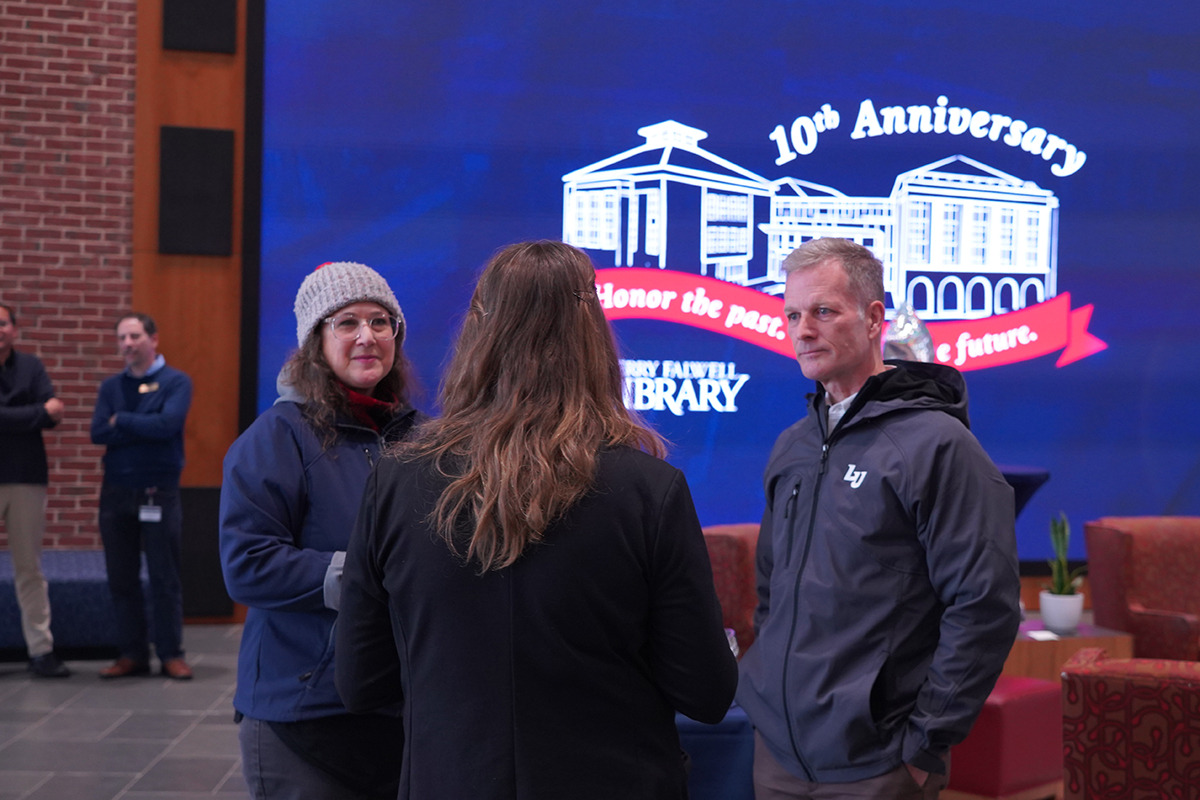
On Jan. 15, 2014, a grand opening ceremony was held with 400 guests — including members of the Falwell family, several of Liberty’s pioneers and longtime supporters, area college presidents, and local and regional leaders. Nearly 10,000 students watched a livestream in the nearby Vines Center and countless others tuned in online.
Dr. Ronald Godwin, Liberty’s Provost and Senior Vice President for Academic Affairs at the time, said during the ceremony that Dr. Falwell would have been celebrating and thanking the Lord for yet another blessing on Liberty’s campus.
“Dr. Falwell is looking down today and he’s smiling because one more time … we’ve succeeded,” he said. “I know that if he [were] here today, in the weeks and days leading up to (the library grand opening), he would have loved to have personally led the challenge of meeting the construction deadlines and overcoming all of the obstacles and delays.”
“Big, hairy, audacious goals were Dr. Falwell’s thing,” Godwin added, citing a label that Falwell Sr. attached to the many aspirations he had for Liberty that only God could make happen.
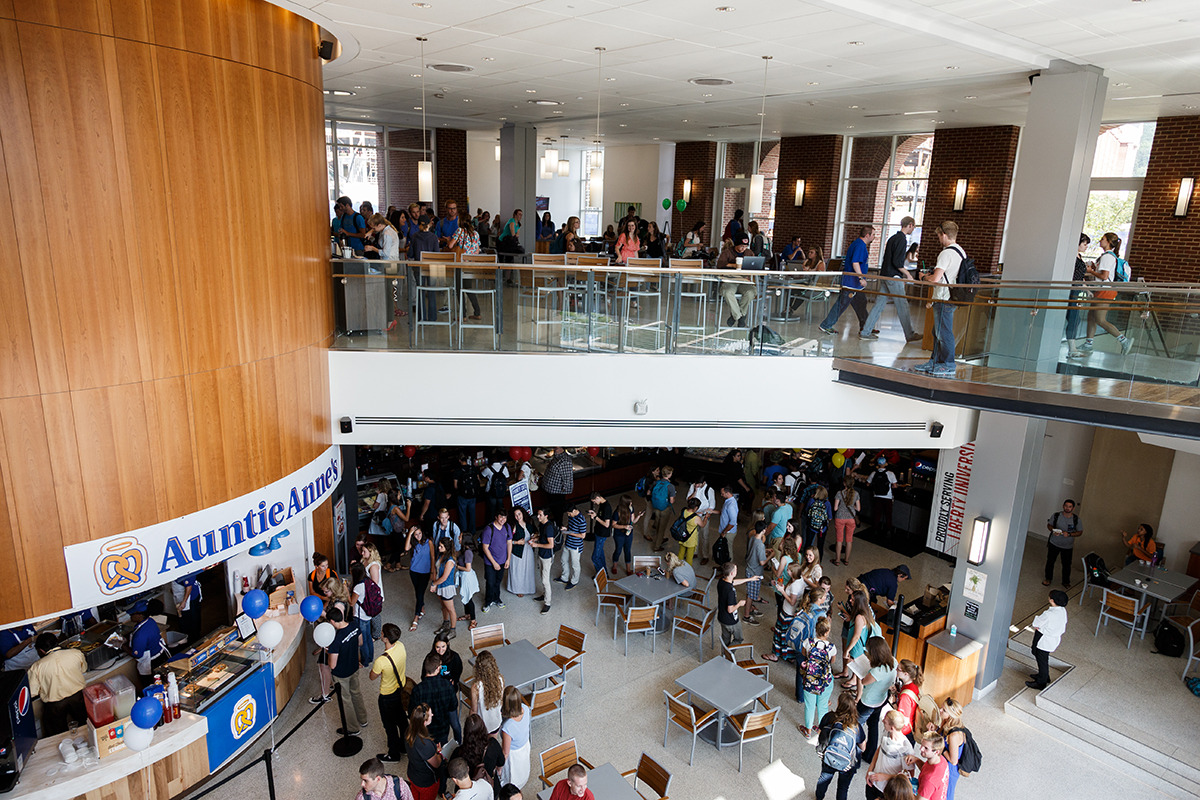
Prior to the Jerry Falwell Library, Liberty’s library was on the first floor of DeMoss Hall with limited space and collections. The move into the Jerry Falwell Library marked the beginning of a major campus transformation.
Even with the many changes in the higher education landscape and within the Jerry Falwell Library over its decade-long operation, Rice said that the ultimate objective of assisting students in their classes, research, and college experience has, and will, remain at the forefront.
“So many technologies and features have changed, but there are many aspects that are timeless: the desire to serve the students and the dedication to having the best possible resources and people — those are core to us at the library,” she said. “Our ultimate goal is to serve, however that may be.”
